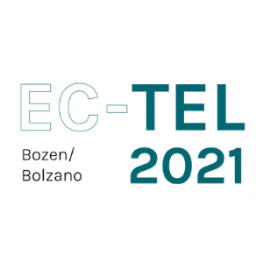Speakers
Kexin Bella Yang
Carnegie Mellon University, USAYongchao Wu
Stockholm University, SwedenPatrick Jost
Norwegian University of Science and Technology, NorwayStart
22/09/2021 - 13:30
End
22/09/2021 - 15:00
Address
Zoom Room 2 @ EC-TEL Gather Town View mapPaper Session 4: Collaborative Learning
Chair:  Jan Schneider
Jan Schneider
Surveying Teachers’ Preferences and Boundaries Regarding Human-AI Control in Dynamic Pairing of Students for Collaborative Learning
Kexin Bella Yang[1], Luettamae Lawrence[1], Vanessa Echeverria[2], Boyuan Guo[1], Nikol Rummel[3] and Vincent Aleven[1] [1] Carnegie Mellon University, USA [2] Escuela Superior Politécnica del Litoral (ESPOL), Ecuador [3] Ruhr-Universität Bochum, Germany
Abstract: Orchestration tools may support K-12 teachers in facilitating student learning, especially when designed to address classroom stakeholders’ needs. Our previous work revealed a need for human-AI shared control when dynamically pairing students for collaborative learning in the classroom, but offered limited guidance on the role each agent should take. In this study, we designed storyboards for scenarios where teachers, students and AI co-orchestrate dynamic pairing when using AI-based adaptive math software for individual and collaborative learning. We surveyed 54 math teachers on their co-orchestration preferences. We found that teachers would like to share control with the AI to lessen their orchestration load. As well, they would like to have the AI propose student pairs with explanations, and identify risky proposed pairings. However, teachers are hesitant to let the AI auto-pair students even if they are busy, and are less inclined to let AI override teacher-proposed pairing. Our study contributes to teachers’ needs, preference, and boundaries for how they want to share the task and control of student pairing with the AI and students, and design implications in human-AI co-orchestration tools.
📄 Read More: https://link.springer.com/chapter/10.1007/978-3-030-86436-1_20
Catching Group Criteria Semantic Information When Forming Collaborative Learning Groups
Yongchao Wu, Jalal Nouri, Xiu Li, Muhammad Afzaal and Aayesha Zia Stockholm University, Sweden
Abstract: Collaborative learning has grown more popular as a form of instruction in recent decades, with a significant number of studies demonstrating its benefits from many perspectives of theory and methodology. However, it has also been demonstrated that effective collaborative learning does not occur spontaneously without orchestrating collaborative learning groups according to the provision of favourable group criteria. Researchers have investigated different foundations and strategies to form such groups. However, the group criteria semantic information, which is essential for classifying groups, has not been explored. To capture the group criteria semantic information, we propose a novel Natural Language Processing (NLP) approach, namely using pre-trained word embedding. Through our approach, we could automatically form homogeneous and heterogeneous collaborative learning groups based on
student’s knowledge levels expressed in assessments. Experiments utilising a dataset from a university programming course are used to assess the performance of the proposed approach.
📄 Read More: https://link.springer.com/chapter/10.1007/978-3-030-86436-1_2
From Paper to Online: Digitizing Card Based Co-Creation of Games for Privacy Education
Patrick Jost and Monica Divitini Norwegian University of Science and Technology, Norway
Abstract: Education is rapidly evolving from co-located settings to remote and online learning. However, many proven educational tools are designed for collaborative, co-located classroom work. Effective sketching and ideating tools, such as card-based workshop tools, cannot be applied in remote teaching. This paper explores how the paper-based card and playboard metaphor can be digitized for remote student co-creation via video call sessions. Therefore, a card-based toolkit for co-creating educational games is transformed into a digital representation for remote application. In a between-subject trial with two university student groups (n = 61), it is investigated how users perceive ideation/balancing support and applicability of the technology-enhanced card toolset compared to the paper-based variant. Both groups thereby created an analytic game concept for privacy education. The results remarkably revealed that remote co-creation using the technology-enhanced card and playboard in video call sessions was perceived as significantly more supportive for ideation and game concept balancing. Students also felt more confident to apply the digitized card toolset independently while being more satisfied with their created game concepts. The designed educational game concepts showed comparable patterns between the groups and disclosed the students’ preferences on how games for privacy education should be designed and when and where they would like to play them. Conclusively, design implications for digital card ideation toolsets were synthesized from the findings.
📄 Read More: https://link.springer.com/chapter/10.1007/978-3-030-86436-1_14


